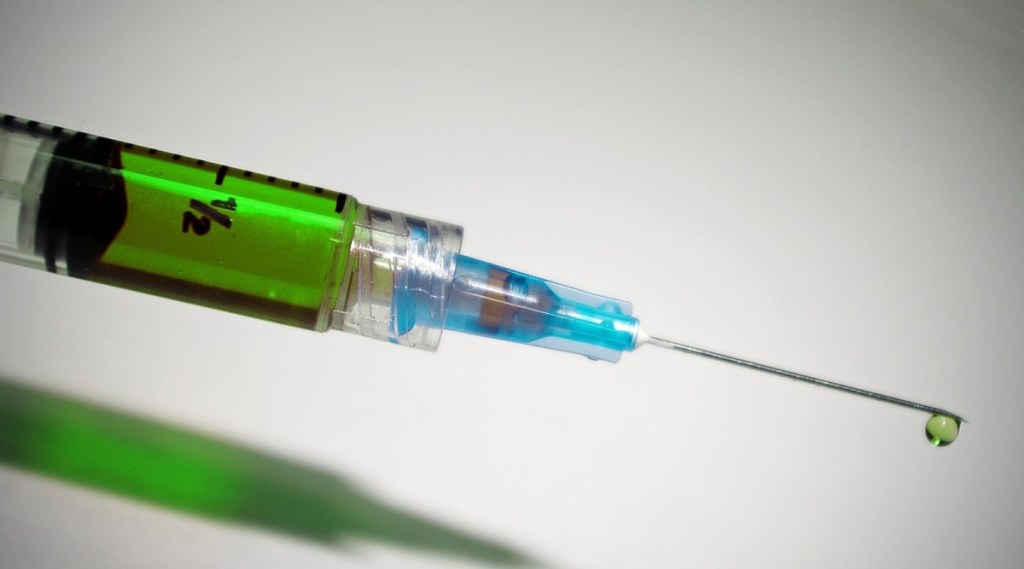The World Health Organization (WHO) on Monday recommended a new vaccine for the prevention of malaria in children. The “highly effective” malaria vaccine, R21/Matrix-M, is developed by the University of Oxford.
According to a press statement, the recommendation comes following the advice from the WHO: Strategic Advisory Group of Experts on Immunization (SAGE) and the Malaria Policy Advisory Group (MPAG) and it was endorsed by the WHO Director-General following its regular biannual meeting held on 25-29 September. This is the second malaria vaccine after the first jab, RTS,S/AS01, was approved by the WHO in 2021.
“Both vaccines are shown to be safe and effective in preventing malaria in children and, when implemented broadly, are expected to have high public health impact. Malaria, a mosquito-borne disease, places a particularly high burden on children in the African Region, where nearly half a million children die from the disease each year,” WHO said in a statement.
According to WHO, there is an “unprecedented” demand for the malaria vaccine however, the available supply of RTS,S is limited. The UN Health body also added that the addition of R21 to the list of WHO-recommended malaria vaccines is expected to result in sufficient vaccine supply to benefit all children living in areas where malaria is a public health risk.
““As a malaria researcher, I used to dream of the day we would have a safe and effective vaccine against malaria. Now we have two,” said Dr Tedros Adhanom Ghebreyesus, WHO Director-General. “Demand for the RTS,S vaccine far exceeds supply, so this second vaccine is a vital additional tool to protect more children faster, and to bring us closer to our vision of a malaria-free future.”
According to Dr Matshidiso Moeti, WHO Regional Director for Africa, this second vaccine holds real potential to close the huge demand-and-supply gap.
“Delivered to scale and rolled out widely, the two vaccines can help bolster malaria prevention and control efforts and save hundreds of thousands of young lives in Africa from this deadly disease,” Dr. Moeti said.
Malaria, a mosquito-borne disease, claims half a million lives every year. According to media reports, the Serum Institute of India is already lined up to make more than 100m doses a year and plans to scale up to 200m a year. R21/Matrix-M is mass manufactured by Serum Institute of India and uses Novavax’s Matrix M adjuvant, news agency Reuters reported.
Adar Poonawalla, CEO of Serum Institute of India, said, as quoted by Reuters, that it had already produced more than 20 million doses in anticipation of WHO’s recommendation.
“We will ramp it up as per what the demand requirements are,” he said in an interview, as per Reuters. “We hope that by the end of 2024, there will be zero mismatch of demand and supply, with our supply coming into the system.”
The vaccine will compete against the RTS,S shot by GSK Plc (GSK.L), which was recommended by the United Nations agency in 2021 and sold under the brand Mosquirix.
WHO also said that both vaccines had shown similar efficacy in separate trials, but without a head-to-head trial there was no evidence showing whether one performed better.
According to GSK, over 1.7 million children in Ghana, Kenya and Malawi had received at least one dose of Mosquirix and it would be rolled out in another nine malaria endemic countries from early next year.
What are the key features of R21 malaria vaccine?
The updated WHO malaria vaccine recommendation is informed by evidence from an ongoing R21 vaccine clinical trial and other studies, which showed:
- High efficacy when given just before the high transmission season: In areas with highly seasonal malaria transmission (where malaria transmission is largely limited to 4 or 5 months per year), the R21 vaccine was shown to reduce symptomatic cases of malaria by 75% during the 12 months following a 3-dose series. A fourth dose given a year after the third maintained efficacy. This high efficacy is similar to the efficacy demonstrated when RTS,S is given seasonally, as per WHO.
- Good efficacy when given in an age-based schedule: The vaccine showed good efficacy (66%) during the 12 months following the first 3 doses. A fourth dose a year after the third maintained efficacy.
- High impact: Mathematical modelling estimates indicate the public health impact of the R21 vaccine is expected to be high in a wide range of malaria transmission settings, including low transmission settings.
- Cost effectiveness: At prices of US$ 2 – US$ 4 per dose, the cost-effectiveness of the R21 vaccine would be comparable with other recommended malaria interventions and other childhood vaccines.
- Similarity of R21 and RTS,S vaccines: The two WHO-recommended vaccines, R21 and RTS,S, have not been tested in a head-to-head trial. There is no evidence to date showing one vaccine performs better than the other. The choice of product to be used in a country should be based on programmatic characteristics, vaccine supply, and vaccine affordability
- Safety: The R21 vaccine was shown to be safe in clinical trials. As with other new vaccines, safety monitoring will continue.
According to WHO, the R21/Matrix-M vaccine will now have to complete the ongoing WHO prequalification which would enable international procurement of the vaccine for broader rollout.
The Global Health Agency also revealed that the RTS,S vaccine will be rolled out in some African countries in early 2024, and the R21 malaria vaccine is expected to become available to countries in mid-2024.






